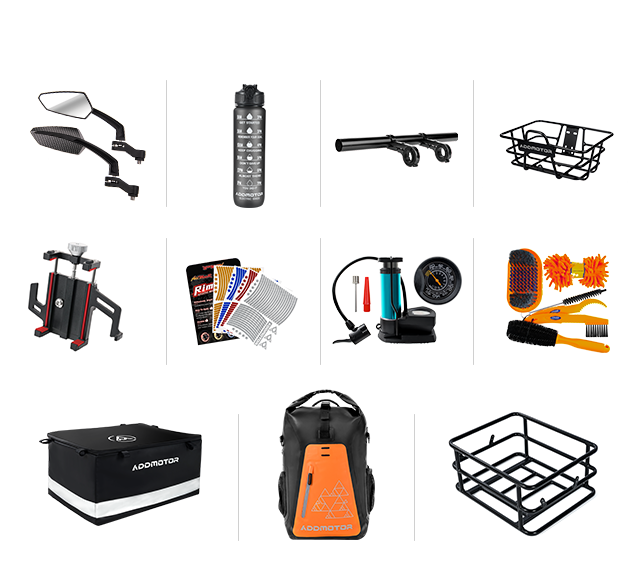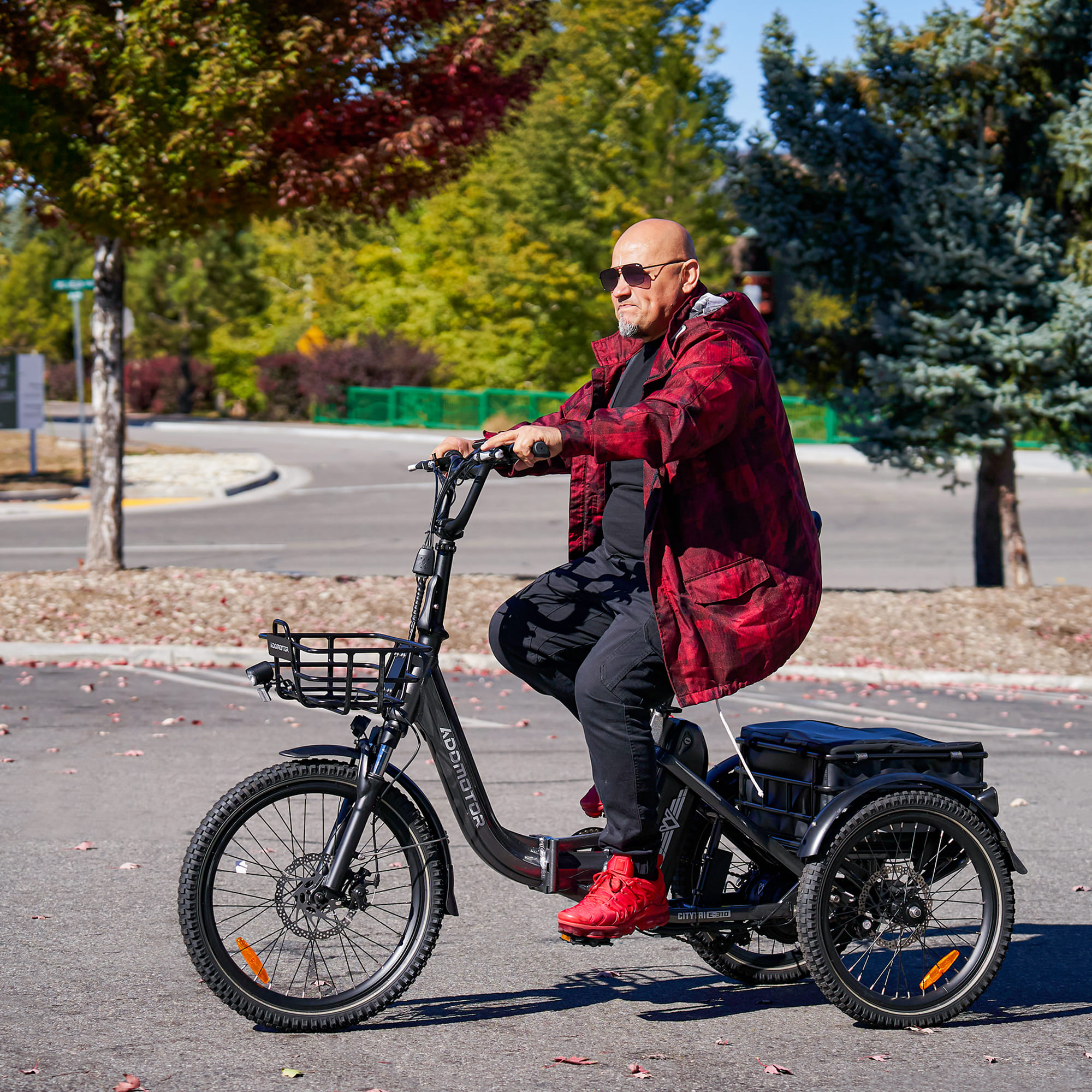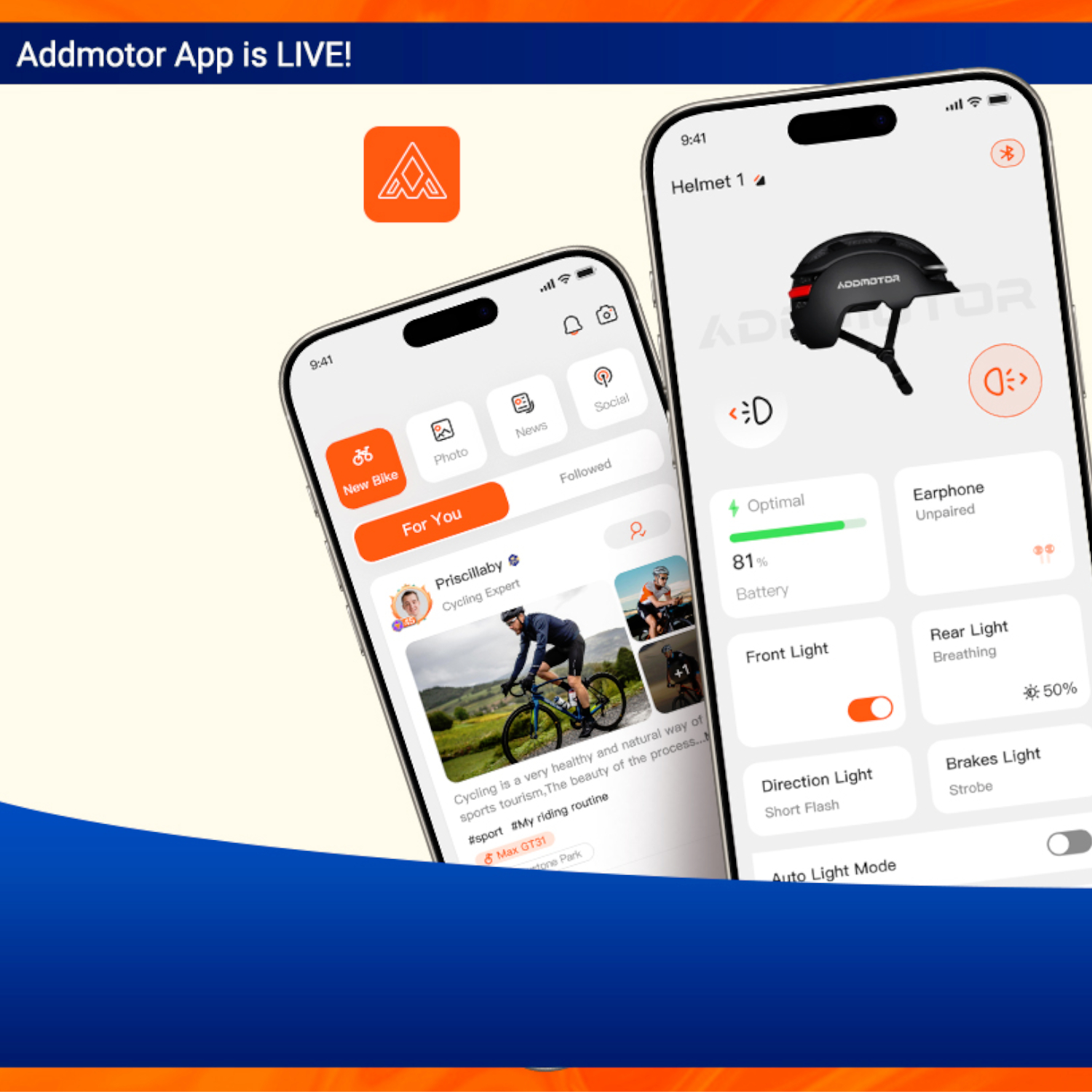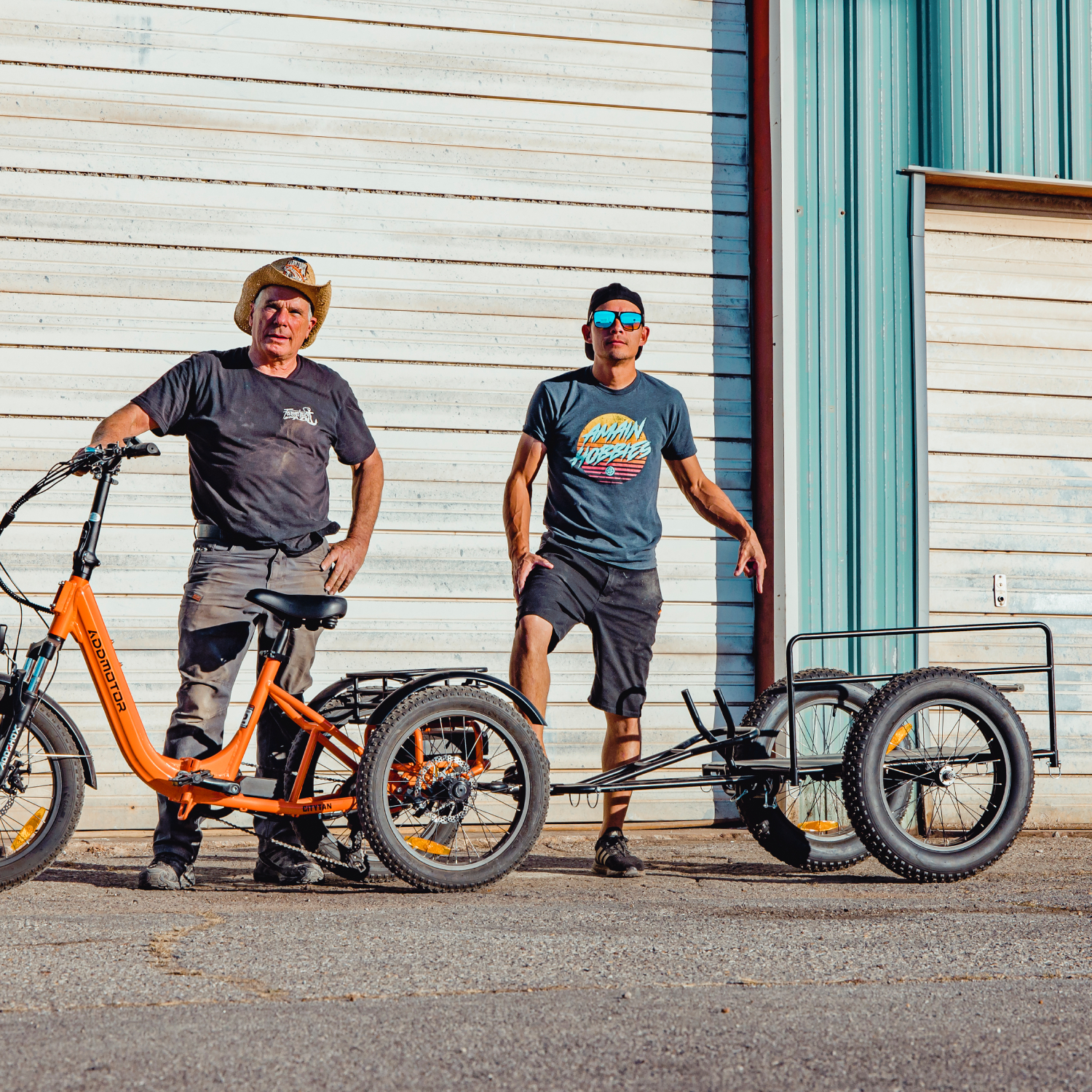Everything You Need to Know About Electric Trike Motors
E-trikes can have hub motors or mid-drive motors. Hub motors are cost-effective and enable throttle control. Mid-drives offer more stability and an intuitive riding experience.
By Addmotor | 28 November 2023 | 0 Comments
Whether that's seniors, adults, or differently-abled, a trike with an electric motor can make a world of difference. They can help you get around more comfortably with little to no physical exertion required.
On top of that, you don't have to worry about balancing the bike. This opens up the possibility to carry cargo, and pets, or take it slow at your own pace.
E-trikes come with different battery capacities, power ratings, cargo capacities, and motors. Out of these, the motor can be the most confusing aspect, so let's talk more about this and discuss your options.
Check out our collection of Addmotor electric trikes
Similar to how many other motors operate, electric trike motors draw electricity from the battery and convert it into mechanical energy.
Simply put, the motor consists of moving electromagnets (the rotor) that repel or attract a centrally fixed magnet (the stator) to rotate and create motion. When current is provided in a specific sequence, these attraction and repulsion forces can be used to spin the motor.
This, in turn, helps add momentum to the wheels (or chain, depending on the motor type) and allows you to maintain the same speed or torque without having to pedal harder.
Addmotor electric trikes and e-bikes use brushless DC motors (BLDC). These are more resistant to wear and tear. Besides, they can work with the DC power provided by the battery and controller.
Addmotor electric trikes come with both hub motors and mid-drive motor variations. However, considering the performance specifications and the cost of these different types, hub motors are the most common motor e-trike option.
Some of these are the front and rear hub motors, rear-mounted hub motors, and mid-drive motors.
However, hub drive motors tend to be larger and heavier than mid-drives. They take up more space and can significantly impact the weight balance of the e-bike.
For an electric trike motor, hub motors can be situated at either the front wheel or rear axle. Typically, front-mounted hub drives are better for more casual and lightweight riders in smooth terrain.
Meanwhile, rear-mounted hub drives are more high-performance and best for cargo, heavy riders, and faster speeds.
Front-mounted hub drives usually do better in spreading out the weight of the bicycle. This is because most e-bikes have the battery pack (the other component that weighs a lot) installed in the rear.
They are also easier to install and remove. You don’t have to remove the derailleur or mess around with the freewheel.
Typically, front wheels aren’t as susceptible to flat tires. As such, they free up the rear wheel, allowing you to patch up rear wheel flats in a pinch.
Currently, the Addmotor GRANDTAN is our best choice for a well-balanced front-mounted trike with an electric motor. It’s ideal for adults, and seniors and comes with a step-through frame for easy access.
_1688021696.jpg)
Compared to front-mounted e-trikes, rear-mounted ones tend to have better traction overall. This is mostly because the majority of your weight shifts to the rear and allows the rubber to meet the road with a tighter grip.
On top of that, they are much more discreet. The rear mounted motor can hide behind the rear wheels and derailleurs without looking too obvious.
Also, since they push the rear wheels, you get a “pushing” sensation instead of the unfamiliar “pulling action” resulting from hub drives in the front wheels.
Addmotor’s TRIKETAN II is our recommendation for a rear-mounted trike with an electric motor. It runs on a 750W rear hub motor with torque sensors to provide a more natural sense of assistance and maneuverability.
Typically, the gears are used to reduce the speed (or RPM) of the electric trike motor and convert this to additional torque. As such, geared hub motors are better suited for low-speed high-torque applications.
Direct-drive motors have a simpler construction. They are affordable, easy to repair, and excel in situations where maintaining top speed is more important.
Throttle drive is the simplest and most affordable option. As the name suggests, you can control the electric trike motor via a thumb or twist throttle.
Driving a throttle-powered trike with an electric motor might be more akin to driving a moped or scooter. You can still use the pedals and pump the throttle whenever you need an extra boost.
Meanwhile, pedal-assist feels more natural. The e-trike uses cadence sensors or torque sensors to detect the speed (or cadence) at which you're pedaling. It will then provide an appropriate amount of power.
The riding experience is much smoother and more natural since they use torque sensors and help balance the weight.
Compared to hub motors, mid-drives are the more high-end option. Mid-drive motor e-trikes can dole out massive amounts of torque to climb steep hills and maintain top speeds through varying terrain.
The only downside is that electric trike motors with mid-drives tend to be more costly. On top of that, if the chain breaks, you can’t rely on the motor to get you back home or to a repair shop.
The Grandtan Turbo is our top pick for a mid-drive powered e-trike. This trike has a 1000W Bafang mid-drive motor and can reach top speeds of 20mph with 160Nm of torque.
Torque sensors tend to offer a much smoother riding experience. This is because the sensor can detect how hard you’re trying to pedal, instead of simply detecting your pedaling speed.
This makes climbing hills and gathering momentum, from a complete stop, fairly effortless. Besides, it feels much more natural than a traditional push-tricycle.
The motor is one of the most significant aspects you must consider when deciding to purchase an Addmotor electric trike.
So after deciding on the type of motor for your e-trike, which includes the construction, gearing, and mode of operation, you also need to pick out a couple of other important specs. These are the rated power of the motor and battery capacity.
On top of that, the actual amount of power depends on external factors as well. These primarily have to do with the weight, battery capacity, terrain, and capabilities of the motor controller.
Whatever the case, you must take a look at the top speed, range, and maximum torque to get a better sense of the motor e-trike’s capabilities.
So be sure to prioritize these specs with your needs. For instance, if you’re a heavier rider or need to haul cargo, prioritize a high-power motor with an appropriate amount of torque.
Typically, a mid-drive or geared hub motor with a power rating of around 750W-1000W will suffice.
On the flip side, if you’re a casual and lightweight city-slicker, you don’t necessarily need a 1000W power rating or a mid-drive motor.
If you’re concerned about the weight balance of the e-trike, you might have to go for a mid-drive or a hefty front-mounted hub motor to even things out.
Also, the battery output can impact the power draw of the electric trike motor. At low battery levels, the motor won’t put out enough torque.
You must prepare for this by considering your use cases and calculating the range required.
For an electric trike motor, you can go for front-mounted, rear-mounted hub drives or mid-drive motors. Mid-drives tend to offer the most natural riding experience since they use torque sensors and pedal assist.
Hub motors tend to be more affordable than mid-drives. On top of that, they can be implemented for throttle control, a feature that’s always included in Addmotor electric trikes meant for adults and seniors.
On top of that, you don't have to worry about balancing the bike. This opens up the possibility to carry cargo, and pets, or take it slow at your own pace.
E-trikes come with different battery capacities, power ratings, cargo capacities, and motors. Out of these, the motor can be the most confusing aspect, so let's talk more about this and discuss your options.
Check out our collection of Addmotor electric trikes

How E-Trike Motors Operate
Similar to how many other motors operate, electric trike motors draw electricity from the battery and convert it into mechanical energy. Simply put, the motor consists of moving electromagnets (the rotor) that repel or attract a centrally fixed magnet (the stator) to rotate and create motion. When current is provided in a specific sequence, these attraction and repulsion forces can be used to spin the motor.
This, in turn, helps add momentum to the wheels (or chain, depending on the motor type) and allows you to maintain the same speed or torque without having to pedal harder.
Addmotor electric trikes and e-bikes use brushless DC motors (BLDC). These are more resistant to wear and tear. Besides, they can work with the DC power provided by the battery and controller.
Types of Electric Trike Motors
Electric trike motors also share the same types of motors similar to e-mountain bikes and e-commuter bikesAddmotor electric trikes come with both hub motors and mid-drive motor variations. However, considering the performance specifications and the cost of these different types, hub motors are the most common motor e-trike option.
Some of these are the front and rear hub motors, rear-mounted hub motors, and mid-drive motors.
Hub Motors
As the name suggests, hub motors get their name since they sit directly on the “hub” of the wheels and drive it forward. Hub motors are the most prevalent type used in e-bikes since they are easy to manufacture and don't cost as much as mid-drives.However, hub drive motors tend to be larger and heavier than mid-drives. They take up more space and can significantly impact the weight balance of the e-bike.
For an electric trike motor, hub motors can be situated at either the front wheel or rear axle. Typically, front-mounted hub drives are better for more casual and lightweight riders in smooth terrain.
Meanwhile, rear-mounted hub drives are more high-performance and best for cargo, heavy riders, and faster speeds.
Front Mounted Electric Trike
Front motor e-trikes have the hub motor installed at the front wheel. Usually, front-mounted hub drives can be found in throttle-powered e-trikes that don’t have a high power rating.Front-mounted hub drives usually do better in spreading out the weight of the bicycle. This is because most e-bikes have the battery pack (the other component that weighs a lot) installed in the rear.
They are also easier to install and remove. You don’t have to remove the derailleur or mess around with the freewheel.
Typically, front wheels aren’t as susceptible to flat tires. As such, they free up the rear wheel, allowing you to patch up rear wheel flats in a pinch.
Currently, the Addmotor GRANDTAN is our best choice for a well-balanced front-mounted trike with an electric motor. It’s ideal for adults, and seniors and comes with a step-through frame for easy access.
_1688021696.jpg)
Rear-Mounted Electric Trike
In the case of electric trikes, the rear-mounted motor e-trikes have a motor installed into the rear axle.Compared to front-mounted e-trikes, rear-mounted ones tend to have better traction overall. This is mostly because the majority of your weight shifts to the rear and allows the rubber to meet the road with a tighter grip.
On top of that, they are much more discreet. The rear mounted motor can hide behind the rear wheels and derailleurs without looking too obvious.
Also, since they push the rear wheels, you get a “pushing” sensation instead of the unfamiliar “pulling action” resulting from hub drives in the front wheels.
Addmotor’s TRIKETAN II is our recommendation for a rear-mounted trike with an electric motor. It runs on a 750W rear hub motor with torque sensors to provide a more natural sense of assistance and maneuverability.
Direct Drive VS Geared
For hub drives, another important spec to consider is the gearing. You can find hub motors as geared or direct-drive options.Typically, the gears are used to reduce the speed (or RPM) of the electric trike motor and convert this to additional torque. As such, geared hub motors are better suited for low-speed high-torque applications.
Direct-drive motors have a simpler construction. They are affordable, easy to repair, and excel in situations where maintaining top speed is more important.
Pedal-Assist VS Throttle Drive
Another important aspect of picking between hub motors is deciding on the mode of operation. In this case, you have two options: pedal assist and throttle.Throttle drive is the simplest and most affordable option. As the name suggests, you can control the electric trike motor via a thumb or twist throttle.
Driving a throttle-powered trike with an electric motor might be more akin to driving a moped or scooter. You can still use the pedals and pump the throttle whenever you need an extra boost.
Meanwhile, pedal-assist feels more natural. The e-trike uses cadence sensors or torque sensors to detect the speed (or cadence) at which you're pedaling. It will then provide an appropriate amount of power.
Mid-Drive Motors
Mid-drive motors sit right in the middle, in between the pedals of the bike. Unlike hub motors, they don’t provide power to the wheels. Instead, they lend power to the trike’s chain (or in some cases, belt).The riding experience is much smoother and more natural since they use torque sensors and help balance the weight.
Compared to hub motors, mid-drives are the more high-end option. Mid-drive motor e-trikes can dole out massive amounts of torque to climb steep hills and maintain top speeds through varying terrain.
The only downside is that electric trike motors with mid-drives tend to be more costly. On top of that, if the chain breaks, you can’t rely on the motor to get you back home or to a repair shop.
The Grandtan Turbo is our top pick for a mid-drive powered e-trike. This trike has a 1000W Bafang mid-drive motor and can reach top speeds of 20mph with 160Nm of torque.
Torque Sensors
Since they're connected to the drive-train, mid-drive motors cannot provide power independently via a throttle. Instead, they strictly rely on pedal-assist modes and torque sensors.Torque sensors tend to offer a much smoother riding experience. This is because the sensor can detect how hard you’re trying to pedal, instead of simply detecting your pedaling speed.
This makes climbing hills and gathering momentum, from a complete stop, fairly effortless. Besides, it feels much more natural than a traditional push-tricycle.
What to Look For When Deciding Between E-Trike Motors?

The motor is one of the most significant aspects you must consider when deciding to purchase an Addmotor electric trike.
So after deciding on the type of motor for your e-trike, which includes the construction, gearing, and mode of operation, you also need to pick out a couple of other important specs. These are the rated power of the motor and battery capacity.
Rated Power
The power rating on electric trike motors can sometimes be pretty vague. Depending on the manufacturer, the power rating might indicate the maximum achievable power or maximum continuous power.On top of that, the actual amount of power depends on external factors as well. These primarily have to do with the weight, battery capacity, terrain, and capabilities of the motor controller.
Whatever the case, you must take a look at the top speed, range, and maximum torque to get a better sense of the motor e-trike’s capabilities.
So be sure to prioritize these specs with your needs. For instance, if you’re a heavier rider or need to haul cargo, prioritize a high-power motor with an appropriate amount of torque.
Typically, a mid-drive or geared hub motor with a power rating of around 750W-1000W will suffice.
On the flip side, if you’re a casual and lightweight city-slicker, you don’t necessarily need a 1000W power rating or a mid-drive motor.
Battery Capacity and Range
Large-capacity batteries will always offer better range. That said, extra batteries can add to the weight of the trike with an electric motor. This change can be especially noticeable when you start to accelerate from a complete stop or cruise at low speeds.If you’re concerned about the weight balance of the e-trike, you might have to go for a mid-drive or a hefty front-mounted hub motor to even things out.
Also, the battery output can impact the power draw of the electric trike motor. At low battery levels, the motor won’t put out enough torque.
You must prepare for this by considering your use cases and calculating the range required.
Wrapping Up
The motor draws power from the batteries and converts it into mechanical energy. This can then help turn the wheels or drive-train and give you an extra boost.For an electric trike motor, you can go for front-mounted, rear-mounted hub drives or mid-drive motors. Mid-drives tend to offer the most natural riding experience since they use torque sensors and pedal assist.
Hub motors tend to be more affordable than mid-drives. On top of that, they can be implemented for throttle control, a feature that’s always included in Addmotor electric trikes meant for adults and seniors.
Leave a Reply
Your email address will not be published.Required fields are marked. *
Latest Stories




